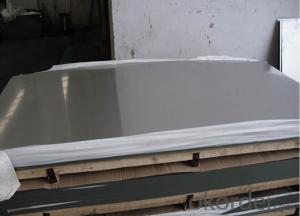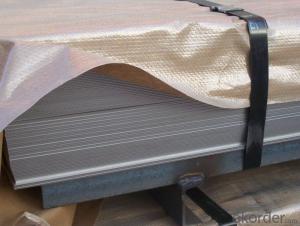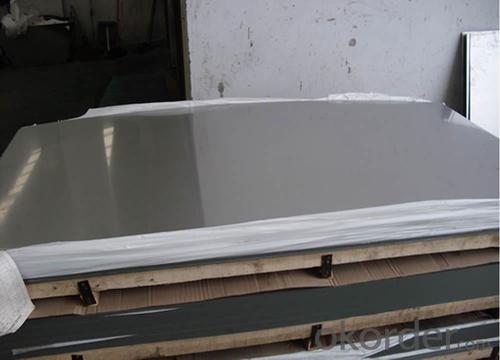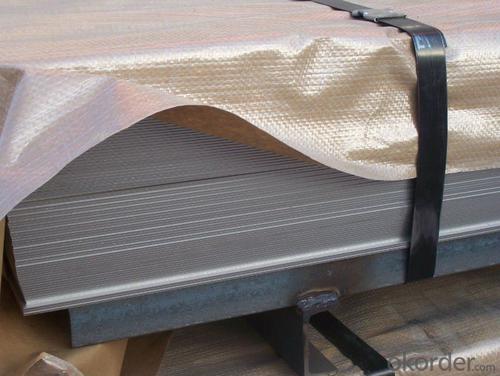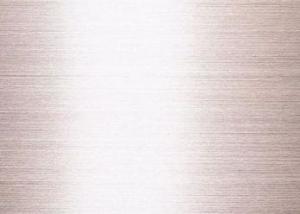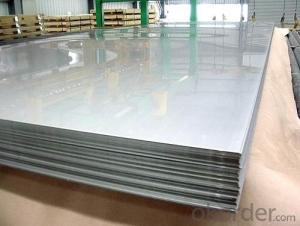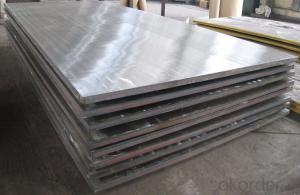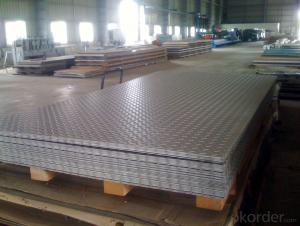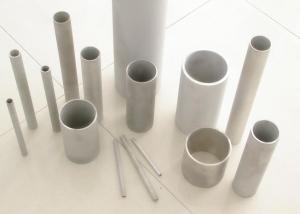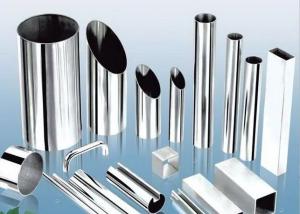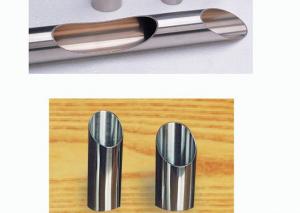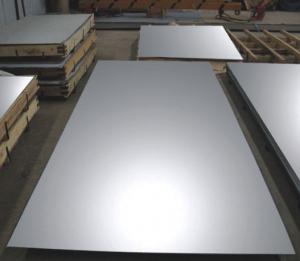Stainless Steel Sheet Plate 409 for Auto Vent Pipe
- Loading Port:
- China main port
- Payment Terms:
- TT OR LC
- Min Order Qty:
- 50 m.t.
- Supply Capability:
- 10000 m.t./month
OKorder Service Pledge
OKorder Financial Service
You Might Also Like
Specification
Stainless Steel SheetPlate 409 for Auto Vent Pipe
Description
Stainless steel is a production which not easy rust,acid resistance and corrosion resistance,so it is widelyused in light industry,heavy industry,daily necessities and the decoration industry.my company long-termsupply stainless steel porducts including:stainless steel sheet,stainless steel coil and stainless steel tube.
Main Features
•Escalator, Elevator, Doors
•Furniture
•Production tools, Kitchen appliances, freezers, cold rooms
•Auto Parts
•Machinery and Packaging
•Equipment and Medical devices
•Transport system
Applications
Stainless steel’s resistance to corrosion and staining, low maintenance and familiar lustre make it an ideal material for many applications.There are over 150 grades of stainless steel, of which fifteen are most commonly used. The alloy is milled into coils, sheets, plates, bars, wire, and tubing to be used in cookware, cutlery, household hardware, surgical instruments, major appliances, industrial equipment Storage tanks and tankers used to transport orange juice and other food are often made of stainless steel, because of its corrosion resistance and antibacterial properties. This also influences its use in commercial kitchens and food processing plants, as it can be steamcleaned and sterilized and does not need paint or other surface finishes.
Specifications
Description | steel sheet,hot rolled steel sheet,cold rolled steel sheet, steel sheet,sheet,steel plate |
Standard | ASME, ASTM, EN ,BS,GB,DIN, JIS etc |
Surface Finish
Surface finish | Characteristics and application |
2B | The surface brightness and flatness of no2B is better than no2D. then through a special surface treatment to improve its mechanical properties,No2B could nearly satisfy comprehensive uses. |
No.1 | Polished with abrasive belt of grit#100-#200, have better brightness with discontinuous coarse stria, used as inner and external ornaments for building, electrical appliances and kitchen utensils etc. |
No.4 | Polished with abrasive belt of grit #150-#180,have better brightness with discontinuous coarse stria, but thinner than No3, are used as bathtub buildings inner and external ornaments electrical appliances kitchen utensils and food processing equipment etc. |
HL | Polished with abrasive belt of grit #150-#320 on the NO.4 finish and has continuous streaks, mainly used as buildings ornaments elevators, door of building, frontal plate etc. |
BA | Cold rolled, bright annealed and skin-passed, the product have excellent brightness and good reflexivity like mirror, kitchen apparatus, ornament etc. |
8K | The product have excellent brightness and prefer reflexivity can to be the mirror. |
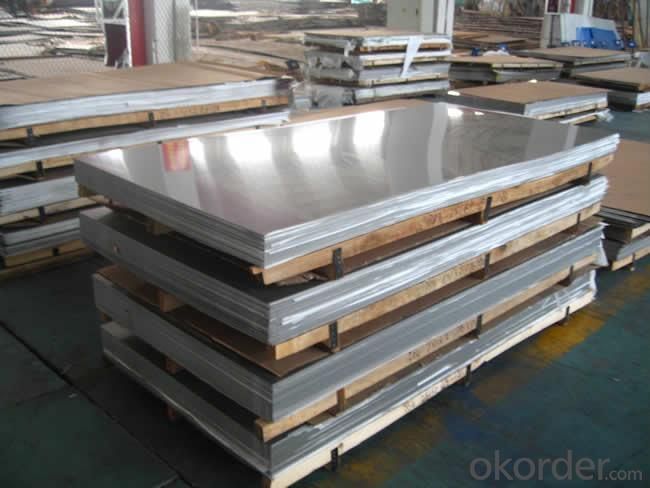
- Q: How do you calculate the cost of a stainless steel sheet?
- To calculate the cost of a stainless steel sheet, you would typically consider factors such as the dimensions, thickness, grade of stainless steel, and market prices. By multiplying the area of the sheet with the cost per square unit, you can determine the total cost. It is important to consider additional expenses like shipping, handling, and any applicable taxes or fees.
- Q: Are stainless steel sheets suitable for chemical processing equipment?
- Yes, stainless steel sheets are highly suitable for chemical processing equipment. Stainless steel is known for its exceptional corrosion resistance, making it resistant to chemical substances and environments. It is also durable, strong, and easy to clean, making it a preferred material for chemical processing equipment that requires regular exposure to various chemicals and rigorous cleaning procedures. Additionally, stainless steel has a high melting point, making it suitable for handling high temperatures often involved in chemical processes. Overall, stainless steel sheets are an excellent choice for chemical processing equipment due to their corrosion resistance, durability, strength, and ease of maintenance.
- Q: What is the bending strength of stainless steel sheets?
- The bending strength of stainless steel sheets can vary depending on the specific grade and thickness of the sheet. However, stainless steel is generally known for its high strength and rigidity, making it suitable for various applications that require strong and durable materials.
- Q: How high is the temperature of 2520 stainless steel?
- 310S stainless steel austenitic chromium nickel stainless steel has good oxidation resistance, corrosion resistance, because the higher percentage of chromium and nickel, which has much better creep strength, can continuously work under high temperature, good heat resistance, softening temperature is more than 800[1], and the allowable stress continued to decrease, the highest use temperature of 1200 DEG C.
- Q: Are stainless steel sheets non-magnetic?
- No, stainless steel sheets are not inherently non-magnetic. While certain types of stainless steel can be non-magnetic, such as the austenitic variety (grades like 304 and 316), many other types of stainless steel can still exhibit magnetic properties. This is particularly true for ferritic and martensitic stainless steels. The magnetism in stainless steel is determined by its composition and crystal structure. So, if you are specifically looking for non-magnetic stainless steel sheets, you should opt for the austenitic grades.
- Q: How many steps do I need for stamping the stainless steel plate?
- Among the world's steel products, 60 to 70% are plates, most of which are finished by pressing. The car body, chassis, fuel tank, radiator plate, boiler drum, container shell, motor, electrical equipment, iron core, silicon steel sheet and so on are all stamping processing. Instruments and meters, household appliances, bicycles, office machinery, household utensils and other products, there are a large number of stamping parts.
- Q: What's the difference between stainless steel 304 and stainless steel 202?
- 202 stainless steel is one of the 200 series stainless steel, the national standard model is 1Cr18Mn8Ni5N. 200 series stainless steel is low nickel, high manganese stainless steel, nickel content, manganese content of about 8%, is a nickel type stainless steel.
- Q: Can stainless steel sheets be used for water tanks or storage containers?
- Yes, stainless steel sheets can be used for water tanks or storage containers. Stainless steel is known for its durability, corrosion resistance, and hygienic properties, making it an excellent choice for storing water or other liquids. It is commonly used in various industries, including food and beverage, pharmaceuticals, and chemical storage, due to its ability to maintain the quality and purity of the stored substances.
- Q: Are stainless steel sheets easy to install?
- Yes, stainless steel sheets are relatively easy to install. They usually come in standard sizes and can be easily cut to fit specific dimensions if needed. Stainless steel sheets are lightweight and can be easily handled, making the installation process more convenient. Additionally, they often come with pre-drilled holes, which allows for easy attachment to various surfaces. With proper tools and basic knowledge of installation techniques, stainless steel sheets can be installed in a straightforward manner.
- Q: How do you determine the best grade of stainless steel sheet for a specific application?
- When determining the ideal stainless steel sheet grade for a particular application, various factors need to be taken into account. Firstly, one must assess the environmental conditions to which the sheet will be exposed, including temperature, humidity, and potential contact with corrosive substances. By doing so, the necessary level of corrosion resistance for the stainless steel can be determined. Secondly, the mechanical properties required for the application must be considered, including strength, hardness, and ductility. The intended use of the stainless steel sheet, whether it be for structural purposes or for a decorative application, will help determine the specific mechanical properties needed. Furthermore, the fabrication process and any subsequent treatments or finishes must be taken into consideration. Depending on their composition and characteristics, certain stainless steel grades may be more suitable for forming, welding, or machining. Additionally, it is important to consider the cost implications associated with different stainless steel grades. Higher grades often come with a higher price tag, so it is essential to balance the desired performance with the available budget. To determine the most suitable stainless steel sheet grade, it is recommended to seek advice from experts in the field, such as stainless steel suppliers or engineers specializing in materials selection. Their knowledge and experience can provide valuable guidance, considering the specific requirements of the application.
Send your message to us
Stainless Steel Sheet Plate 409 for Auto Vent Pipe
- Loading Port:
- China main port
- Payment Terms:
- TT OR LC
- Min Order Qty:
- 50 m.t.
- Supply Capability:
- 10000 m.t./month
OKorder Service Pledge
OKorder Financial Service
Similar products
Hot products
Hot Searches
Related keywords
